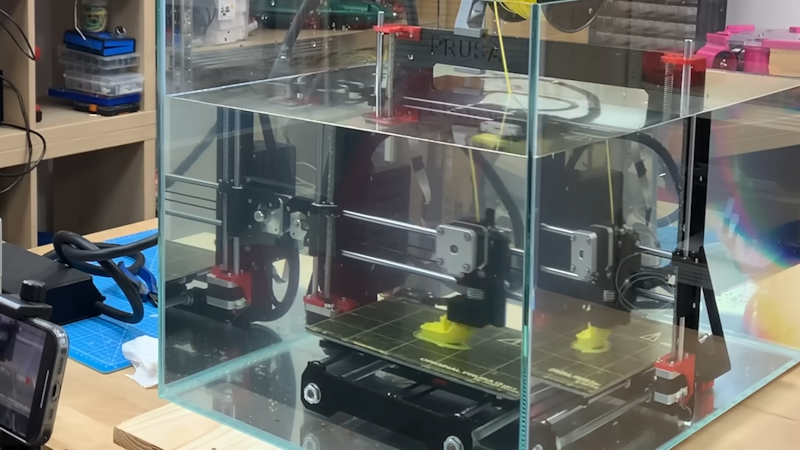Better 3D Printing Overhangs? Dive! Dive! [Hackaday]

If you want better 3D-printed overhangs, you need better cooling, right? What would be better for cooling than printing submerged in water? It turns out [CPSdrone] tried it, and, at least for overhangs, it seems to work pretty well. Check it out in the video below.
Of course, there are some downsides. First, the parts of the 3D printer don’t want to work in water. The guys used deionized water to minimize water conductivity and also sealed open connections. Some components were replaced with equivalents that were less likely to corrode. However, the bearings in the stepper are still going to corrode at some point.
There’s no free lunch, though. Cooling is good for some parts of 3D printing. But for the hot parts, it could cool down too much. They encased the hot end in a large silicon block to help prevent this. They also potted the controller board, which works but makes future maintenance and upgrades painful. Initial tests looked promising.
They finally put the modified printer in a water tank and got some prints. Overhangs were good — especially extreme overhangs — but layer adhesion, as you might expect, suffers. They speculate that heating the water could help. However, the parts looked usable. There were a few trials along the way, but they solved all the problems, at least for a short time.
In the end, bridges didn’t look much better, and, as a side effect, the prints were full of water when they came off the bed. The next obvious test is to do the printing in a public swimming pool. It is doubtful that is any better, but it certainly makes a good conversation starter at the local pool.
We are a sucker for novel 3D printers. Of just anything that mixes unusual items with 3D printing.

![better-3d-printing-overhangs?-dive!-dive!-[hackaday]](https://i0.wp.com/upmytech.com/wp-content/uploads/2023/12/156036-better-3d-printing-overhangs-dive-dive-hackaday.png?resize=800%2C445&ssl=1)